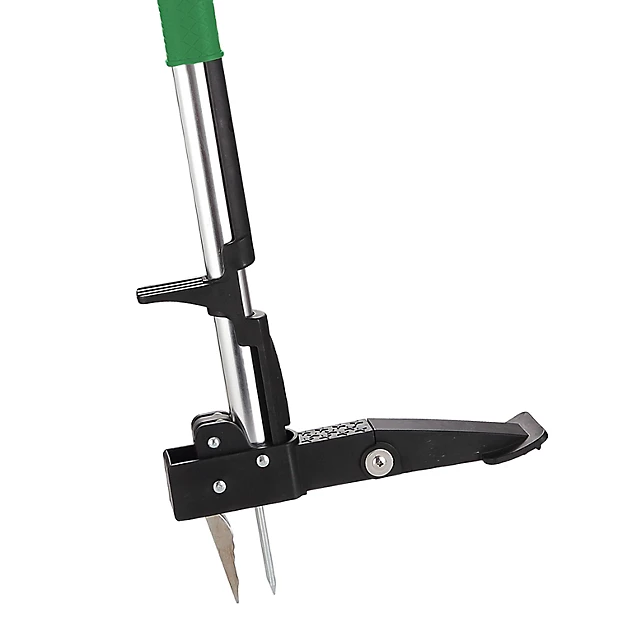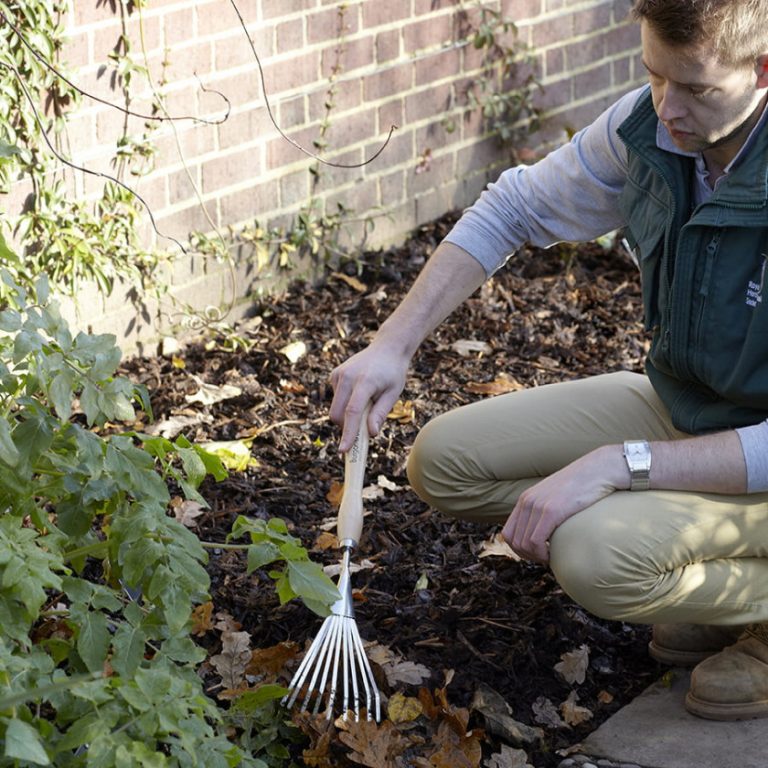
Stand Up Weed Puller Tool: The Gardener’s Back-Saving Solution
Effortless Weed Removal for a Pristine Lawn and Garden
Stand up weed puller tool revolutionize garden maintenance. These innovative tools allow gardeners to remove weeds without bending or kneeling. They combine efficiency with ergonomic design. This blog explores the benefits, types, and uses of stand up weed pullers. It also provides tips for choosing and maintaining these essential gardening tools.
Understanding Stand Up Weed Pullers: Your Upright Weed Removal Ally
Stand up weed pullers offer a back-friendly solution to weed removal. These tools allow gardeners to extract weeds from a standing position. They eliminate the need for bending, kneeling, or squatting. Stand up weed pullers typically consist of a long handle, a foot pedal, and a grabbing mechanism. This design enables efficient weed removal while minimizing physical strain.
Key components of stand up weed pullers include the handle, shaft, and weed-grabbing mechanism. Handles provide leverage and control. They often feature ergonomic grips for comfort during extended use. The shaft connects the handle to the weed-grabbing mechanism. It determines the tool’s reach and stability. The weed-grabbing mechanism varies by design but generally includes prongs or claws that grip the weed.
Stand up weed pullers work by leveraging mechanical advantage. The user positions the tool over a weed. They then apply downward pressure, often using a foot pedal. This action drives the grabbing mechanism into the soil around the weed. The user then pulls up on the handle, extracting the weed with its roots intact. Some models include an ejection mechanism to release the pulled weed without touching it.
Types of Stand Up Weed Pullers: Choosing the Right Tool for Your Garden
Claw-style pullers represent a popular category of stand up weed pullers. These tools feature multiple prongs or claws that surround the weed. The claws penetrate the soil and grip the weed’s root system. Claw-style pullers excel at removing tap-rooted weeds like dandelions. They often include a lever mechanism for added pulling power. Some models offer adjustable claw widths to accommodate different weed sizes.
Spike-and-lever pullers offer another effective design. These tools use a single spike to penetrate the soil beside the weed. A lever mechanism then grips the weed and pulls it out. Spike-and-lever pullers work well for weeds with fibrous root systems. They often provide a cleaner extraction than claw-style pullers. However, they may require more precise positioning to effectively grab the weed.
Drill-assisted pullers represent an innovative approach to weed removal. These tools attach to a power drill for rapid weed extraction. They typically feature a spiral auger that drills into the soil around the weed. The rotating action pulls the weed out by its roots. Drill-assisted pullers offer speed and efficiency for large areas. However, they require a power source and may disturb more soil than manual options.
Benefits of Using Stand Up Weed Pullers: Ergonomics, Efficiency, and Eco-Friendliness
Ergonomic advantages stand out as a primary benefit of stand up weed pullers. These tools significantly reduce strain on the back, knees, and hands. Gardeners can maintain an upright posture while removing weeds. This ergonomic design prevents fatigue and reduces the risk of gardening-related injuries. Stand up weed pullers prove particularly beneficial for older gardeners or those with mobility issues.
Time and effort savings make stand up weed pullers a valuable gardening asset. These tools extract weeds more quickly than manual pulling. They often remove the entire root system, reducing weed regrowth. This efficiency allows gardeners to cover larger areas in less time. Stand up weed pullers also minimize the physical effort required for weed removal. Gardeners can maintain their landscapes with less exhaustion and more enjoyment.
Environmental benefits arise from the use of stand up weed pullers. These tools provide an alternative to chemical weed killers. They allow for targeted weed removal without affecting surrounding plants. By extracting the entire root system, stand up weed pullers reduce the need for repeated treatments. This mechanical approach to weed control supports organic gardening practices. It promotes a healthier ecosystem in gardens and lawns.
Choosing the Right Stand Up Weed Puller: Matching Tool to Task
Considerations for different garden types influence the choice of stand up weed puller. Lawns with scattered weeds benefit from precise tools like spike-and-lever pullers. Gardens with densely packed weeds may require the efficiency of claw-style or drill-assisted pullers. Soil type also affects tool selection. Sandy soils may need wider claws to grip weeds effectively. Clay soils might require sharper, more penetrating tools.
Material and durability factors play a crucial role in stand up weed puller selection. Steel components offer strength and longevity. Aluminum provides a lightweight alternative for easier handling. Fiberglass handles combine durability with weight savings. Plastic components may reduce cost but typically offer less durability. Gardeners should consider the expected frequency of use when evaluating material options.
Budget-friendly vs. premium options present a range of choices for stand up weed pullers. Entry-level models offer basic functionality at affordable prices. They suit occasional use in small gardens. Mid-range options provide improved durability and features for regular use. Premium stand up weed pullers offer advanced designs, superior materials, and enhanced ergonomics. These high-end tools benefit avid gardeners and professionals. Buyers should balance their budget with expected usage and desired features.
Effective Techniques for Using Stand Up Weed Pullers: Maximizing Efficiency and Results
Proper stance and grip ensure effective use of stand up weed pullers. Users should stand with feet shoulder-width apart for stability. The dominant hand should grip the upper handle firmly. The other hand provides support and guidance on the shaft. Many tools feature foot pedals for applying downward pressure. Users should position their foot on the pedal, ready to apply even pressure.
Targeting different weed types requires adjusting technique. For tap-rooted weeds like dandelions, position the tool directly over the center of the plant. Apply firm, steady pressure to penetrate deeply. Fibrous-rooted weeds may require a rocking motion to loosen the soil. Some weeds with spreading roots benefit from multiple extractions around the main plant. Observing the root structure of pulled weeds helps refine technique for future removals.
Dealing with stubborn roots challenges even the best stand up weed pullers. Moistening the soil before weed removal can ease extraction. For particularly stubborn weeds, try working the tool around the plant to loosen soil. Some gardeners find success by twisting the tool while pulling upward. If a weed refuses to budge, consider using a complementary tool like a hand trowel to loosen the soil further.
Maintaining Your Stand Up Weed Puller: Ensuring Longevity and Performance
Cleaning and storage tips extend the life of stand up weed pullers. After each use, remove soil and plant matter from the tool. A stiff brush helps clean crevices in the grabbing mechanism. Rinse the tool with water if necessary, then dry thoroughly. Store stand up weed pullers in a dry, protected area. Hanging storage prevents damage and keeps the tool easily accessible. Some gardeners apply a light coat of oil to metal parts to prevent rust.
Sharpening and replacing parts maintain the effectiveness of stand up weed pullers. Claw-style pullers may need occasional sharpening to penetrate soil easily. Use a metal file to carefully hone the edges of prongs or spikes. Many stand up weed pullers feature replaceable parts. Common replacements include grips, foot pedals, and grabbing mechanisms. Keeping spare parts on hand ensures uninterrupted use of the tool.
Winterizing your tool prepares it for the off-season. Clean the stand up weed puller thoroughly before storage. Inspect all parts for wear or damage. Address any issues before storing to ensure readiness for spring. Consider disassembling complex tools for thorough cleaning and lubrication. Store the tool in a dry, temperature-stable environment. Proper winterization prevents rust and ensures peak performance in the next growing season.
Complementary Tools and Strategies: Comprehensive Weed Management
Combining stand up weed pullers with other weed control methods enhances overall effectiveness. Pre-emergent herbicides prevent weed seeds from germinating. Mulching suppresses weed growth around desirable plants. Flame weeders offer another chemical-free option for weed control. Integrating these methods with stand up weed pullers creates a multi-faceted approach to weed management.
Preventative measures reduce the need for frequent weed pulling. Maintaining a healthy, dense lawn crowds out many weeds. Proper mowing height discourages weed growth. In garden beds, planting ground covers and dense plantings minimizes open soil for weeds. Landscape fabric or plastic mulch provides long-term weed suppression in some areas. These preventative strategies complement the targeted removal capability of stand up weed pullers.
Creating a comprehensive weed management plan optimizes the use of stand up weed pullers. Start by identifying problem areas and common weed types. Develop a schedule for regular weed removal sessions. Incorporate preventative measures and complementary control methods. Monitor results and adjust strategies as needed. A well-planned approach reduces overall weed pressure and makes stand up weed puller use more efficient.
Stand up weed pullers offer an ergonomic, efficient solution to weed control. They combine the precision of hand weeding with the comfort of upright tools. By removing weeds with their root systems intact, these tools provide long-lasting results. The variety of designs available ensures a suitable option for every garden type and user preference.
Maintenance plays a crucial role in the longevity and performance of stand up weed pullers. Regular cleaning, proper storage, and timely repairs keep these tools in top condition. Well-maintained stand up weed pullers provide years of reliable service. This longevity makes them a valuable investment for any gardener.





